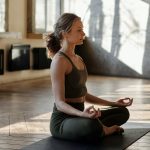Can Cancer patients benefit from Exercise?
How can we get the most out of life while battling one of the scariest illnesses plaguing modern society?
By NOT LETTING IT GET IN THE WAY OF LIVING!!!
The Big C! Cancer is a term that used to mean imminent death and has become a terrifyingly all too common reality for many families these days. Although cancer rates seem to be climbing, it may be due to our improved detection capabilities and growing population size, and increase in average life expectancy.
Regardless, the prospect of living with cancer is something that many of us may face.
The GOOD NEWS is that our ability to combat cancer and delay, or reduce, its effect on our body, including the effects of treatment like chemotherapy, means that we can expect to live a more fulfilling life even while fighting the good fight.
Can we Exercise with Cancer?
ABSOLUTELY!!! Not only can we, it is advised globally across all health boards that exercising can help to combat the effects of cancer and treatments on the body, and improve quality of life substantially.
The Clinical Oncology Society of Australia (COSA) position statement on exercise in cancer care: “Exercise should be prescribed to all cancer patients as a standard part of their cancer care to help manage the effects of cancer and its treatment.”
There is no doubt that the effects of cancer, and treatment, can take a huge toll on the body and mind. Exercise during this period is not going to be easy or necessarily consistent, nor should it expect to be. Some days and weeks may be better than others.
However, an individually tailored, modifiable, supervised exercise program and home exercise routine SHOULD BE part of all cancer treatment plans.
Are there any Risks that may need to be considered?
Cancer and treatment therapies can take their toll on the body. When talking through exercise options with your health professional team, consider the following:
- General immunity and white cell count – infection risk with exercise locations and equipment
- Bone health – fracture risk
- Platelet count – bleeding and bruising risk for falls or impact
- Balance and coordination – supervision and suitable environments
- Skin care – consider clothing, chlorine or sun exposure
- Nerve damage – consider coordination, sensation, equipment and clothing (shoes)
What is the recommended dosage?
This may vary to which type of exercise you choose to undertake. The good news is that strength training, cardiovascular training and flexibility are all encouraged.
In the beginning you may just aim to sit less and MOVE MORE at home, reduce inactivity with small tasks including basic cleaning, cooking, gardening or walking. This should be the aim for every day of the week.
- 2-3 strength training sessions a week
- 150-300 minutes of moderate intensity exercise
OR
- 75-150 minutes of vigorous intensity exercise
OR
- Reasonable combination of both the above
There are measurements and guides for calculating what an intense exercise is, however when starting out, your own perceived exertion should be considered to help maintain enjoyment. AND consulting a trained health professional like a Physiotherapist can help guide you through this process. The team at Leaders Physiotherapy in the Brisbane CBD are experts in exercise prescription.
What are some of the benefits of Exercise?
So now you know the risks, how much to do and what types of exercise can help improve your well being.
FOR WHAT OTHER REASONS SHOULD I EXERCISE:
- Circulation
- Strengthen muscles and bones
- Improve energy levels and function
- Maintain healthy weight
- Improve self esteem, reduce stress and anxiety
- Maintain social life
While REDUCING the RISK AND IMPACT of other potential diseases:
- Heart Disease
- Diabetes
- Stroke
- Osteoporosis
- High Blood pressure
In closing, Cancer is a life changing disease. The road to treatment and better health is usually challenging. Just don’t give cancer the upper hand by sitting still. Surround yourself with support – family, friends and a team of health professionals to guide you through this process, and do whatever you can TO MOVE.
This way your life will be the healthiest and happiest it can be, no matter what new challenge comes your way.





